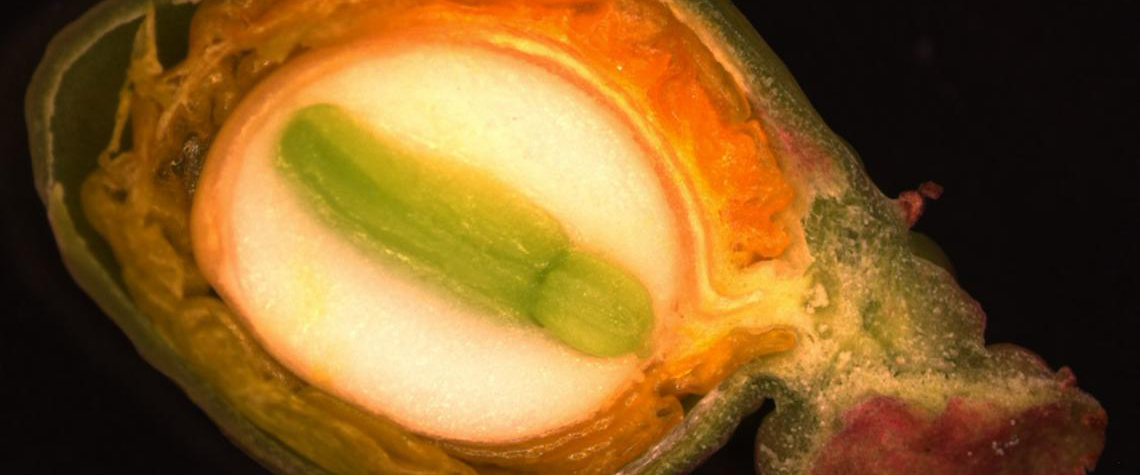
Imagine if farmers could grow plants, press their seeds to extract oil, and use that oil to sustain their farm operations rather than relying on fossil fuels. Building on ten years of research and collaboration, scientists at the Great Lakes Bioenergy Research Center (GLBRC) have isolated an enzyme that brings this scenario one step closer to reality.
The enzyme identified produces seed oil with unusual compounds called acetyl glycerides, or acTAGs, says Timothy Durrett, a plant biology research associate at Michigan State University (MSU). The seed oil comes from a common shrub, Euonymus alatus, also known as the burning bush. This ornamental shrub is extremely common throughout the United States, and has even been classified as an invasive species in some locations. Unusual aspects of seed oil synthesis in the burning bush made it a useful species to study.
“They have a lower viscosity which makes them more useful as an environmental biofuel compared to regular vegetable oils,” Durrett says.
The low viscosity of the oil is especially important, because that characteristic makes it potentially viable as a drop-in fuel. If it can be produced in high volumes and simply extracted from plants, this technology could improve and enhance the production of biodiesel.
"This technology is exciting for industry, because it appears to be closer to commercialization," says David Pluymers, GLBRC’s intellectual property and quality manager. “It has potential for very large-scale application in the future."
Ultimately, GLBRC scientists hope to coax biofuel crops into producing very high levels of acetyl glycerides in commercial vegetable oils, emulating the natural situation occurring in the burning bush.
“There's still a lot of work that has to be done in terms of economic viability or agricultural viability to see where this goes, but this is the very first step,” says Durrett.
For Durrett and the rest of the team at MSU, including Drs. Michael Pollard and John Ohlrogge, of the Department of Plant Biology, and other researchers, this project was quite a challenge. It took the lab about ten years to make this discovery, but the breakthrough is extremely rewarding.
“Early experiments gave us some insights into what we were looking for, but we really needed the deep transcriptional profiling data. The gene’s exact identity could not have been predicted based solely on our early knowledge,” Durrett says.
Two cutting-edge technologies, deep transcriptional profiling and ESI-MS, were instrumental in making the research progress that eventually led to the discovery. Without these technologies and collaboration with the U.S. Department of Energy’s Joint Genome Institute, he could have missed the specific gene. The technologies allowed the researchers to quickly screen and compare gene candidates, ultimately leading to a breakthrough.
The unique collaborative environment at GLBRC, including the ability to work with researchers in different labs and learn about unrelated technologies, was essential to the success of the project.
Biofuel is not the only key benefit of the discovery. There is also potential in the plastics industry and in low-calorie food oils. This new low-calorie food option would be similar to existing products, but would be more naturally produced instead of the current chemical synthesis process, Durrett says. This factor could help appeal to a larger consumer base.
The technology developed as part of this GLBRC project is currently under full patent review. It is only one of multiple technologies discovered by GLBRC scientists. If you are interested in this or other GLBRC technologies, visit our Technologies page.
With the constant technological advances occurring today, GLBRC researchers will continue to study the burning bush enzyme in hope that someday farmers will be producing and sustaining their own fuel needs.